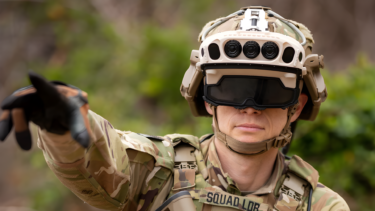Military Hololens faces crucial tests

If the IVAS version 1.2 AR headset does not meet readiness expectations, the U.S. Army's could recompete the contract.
Microsoft recently expressed confidence in the upcoming tests of the military Hololens. After numerous problems with previous versions, the AR headset IVAS version 1.2 is ahead of schedule, it said.
Microsoft's customer, the U.S. Army, confirmed on July 28 that it had received 20 current prototypes. They will undergo testing in August, during which "two squads of Soldiers will use IVAS 1.2 to measure the system’s performance and ensure engineering efforts are on schedule and meeting design objectives."
Critical tests for military hololens
These user evaluations could prove critical to the project's future. Doug Bush, the U.S. Army's Assistant Secretary for Acquisition, Logistics and Technology, expects the tests to show whether the IVAS program is "moving in the right direction," according to ExecutiveBiz magazine.
Bush called the upcoming results an important "data point" for the program. If version 1.2 does not meet its readiness expectations, he said, there will likely be "a new competition".
The Army's media Service DVIDS highlights the numerous improvements made since version 1.0 was fielded last year. New features include a low-light sensor, a low-profile form factor with better distributed counterweight, and a flip-up display under the helmet.
One of the key benefits is allowing Soldiers to see outside vehicles before dismounting into a hazardous situation. "IVAS provides a first-person augmented reality perspective that enables the integrating of operational data such as routes and control measures into the person’s field of view," said Lt. Col. Denny Dresch, product manager for IVAS.
After successful testing, the Army would contract for a second field study from July to September 2024, reports Engadget. Operational combat tests could then take place in April 2025. If those are also positive, IVAS would be operational a few months later, according to the publication.
Note: Links to online stores in articles can be so-called affiliate links. If you buy through this link, MIXED receives a commission from the provider. For you the price does not change.